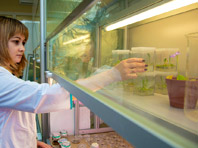Журнал "Медицинский совет" №13, 2019г.
DOI: https://doi.org/10.21518/2079-701X-2019-13-42-48

Вульвовагинальный кандидоз (ВВК) является одной из наиболее распространенных вагинальных инфекций, составляя от 40% до 50% всех случаев инфекционного вульвовагинита. У 70–75% сексуально активных женщин наблюдается по крайней мере один эпизод ВВК в течение жизни, 8–10% взрослых женщин имеют рецидивирующий ВВК. Лечение ВВК до настоящего времени остается одной из наиболее актуальных проблем гинекологии. Несмотря на современные лекарственные средства, используемые в лечении различных форм ВВК, остается высоким удельный вес рецидивирующих форм заболевания.
Для цитирования: Довлетханова Э.Р., Абакарова П.Р. Современные возможности диагностики и лечения вульвовагинального кандидоза (в помощь практикующему врачу). Медицинский Совет. 2019;(13):42-48. https://doi.org/10.21518/2079-701X-2019-13-42-48
Конфликт интересов: авторы заявляют об отсутствии конфликта интересов
Modern opportunities for the diagnosis and treatment of vulvovaginal candidiasis (in aid of a practitioner)

Vulvovaginal candidiasis (VVC) is one of the most common vaginal infections, representing 40% to 50% of all cases of infectious vulvovaginitis. Between 70-75% of sexually active women experience at least one episode of VVC in their lifetime, and 8-10% of adult women have recurrent VVC. The treatment of VVC remains as one of the most pressing challenges of gynecology. The share of recurrent disease event rates remains high, despite the modern medicines used to treat various forms of VVC.
For citation: Dovletkhanova E.R., Abakarova P.R. Modern opportunities for the diagnosis and treatment of vulvovaginal candidiasis (in aid of a practitioner). Medical Council. 2019;(13):42-48. (In Russ.) https://doi.org/10.21518/2079-701X-2019-13-42-48
Conflict of interest: The authors declare no conflict of interest.
Загрузить файл в формате PDF
Литература / References
- 2018 European (IUSTI/WHO) Guideline on the Management of Vaginal Discharge. Available at: http://www.iusti.org/regions/europe/pdf/2018/IUSTIvaginalDischargeGuidelines2018.pdf
- Sherrard J., Wilson J., Donders G., Mendling W., Jensen J.S. 2018 European (IUSTI/WHO) International Union against sexually transmitted infections (IUSTI) World Health Organisation (WHO) guideline on the management of vaginal discharge. Int J STD AIDS. 2018;29(13):1258-1272. https://doi.org/10.1177/0956462418785451
- Workowski K.A., Bolan G.A. Sexually Transmitted Diseases Treatment Guidelines. MMWR Recomm Rep. 2015;64(RR-03):1-137. Available at: https://www.ncbi.nlm.nih.gov/pubmed/26042815
- Brown G.D., Denning D.W., Gow N.A., Levitz S.M., Netea M.G., White T.C. Hidden killers: human fungal infections. Sci Transl Med. 2012;4(165):165rv13. https://doi.org/10.1126/scitranslmed.3004404
- Klimko N., Kozlova Y., Khostelidi S., Shadrivova O., Borzova Y., Burygina E., Vasilieva N., Denning D.W. The burden of serious fungal diseases in Russia. Mycoses. 2015;58(Suppl):58-62. https://doi.org/10.1111/myc.12388
- Cooke G., Watson C., Smith J., Pirotta M., van Driel M.L. Treatment for recurrent vulvovaginal candidiasis (thrush). Cochrane Database of Systematic Reviews. 2011;(5):CD009151. https://doi.org/10.1002/14651858.CD009151
- Карапетян Т.Э., Анкирская А.С., Муравьева В.В. Эффективная терапия при кандидозном вагините. Медицинский совет. 2014;(7):58-61. https://doi.org/10.21518/2079-701X-2014-7-58-61
- Donders G.G., Mertens I., Bellen G., Pelckmans S. Self-elimination of risk factors for recurrent vaginal candidosis. Mycoses. 2009;54(1):39-45. https://doi.org/10.1111/j.1439-0507.2009.01754.x
- Corzo-Leon D.E., Armstrong-James D., Denning D.W. Burden of serious fungal infections in Mexico. Mycoses. 2015;58(Suppl):34-44. https://doi.org/10.1111/myc.12395
- Giacomazzi J., Baethgen L., Carneiro L.C., Millington M.A., Denning D.W., Colombo A.L., Pasqualotto A.C.; Association With The LIFE Program. The burden of serious human fungal infections in Brazil. Mycoses. 2016;59(3):145150. https://doi.org/10.1111/myc.12427
- De Bernardis F., Arancia S., Sandini S., Graziani S., Norelli S.. 2015. Studies of immune responses in Candida vaginitis. Pathogens. 2015;4(4):697-707. https://doi.org/10.3390/pathogens4040697
- Sobel J.D. Recurrent vulvovaginal candidiasis. Am J Obstet Gynecol. 2016;214(1):15-21. https://doi.org/10.1016/j.ajog.2015.06.067
- Goncalves B., Ferreira C., Alves C.T., Henriques M., Azeredo J., Silva S. Vulvovaginal candidiasis: epidemiology, microbiology and risk factors. Crit Rev Microbiol. 2016;42(6):905-927. https://doi.org/10.3109/1040841X.2015.1091805
- Sherry L., Kean R., McKloud E., O’Donnell L.E., Metcalfe R., Jones B.L., Ramage G. Biofilms formed by isolates from recurrent vulvovaginal candidiasis patients are heterogeneous and insensitive to fluconazole. Antimicrob Agents Chemother. 2017;61:e01065-17. https://doi.org/10.1128/AAC.01065-17
- Jung H.S., Ehlers M.M., Lombaard H., Redelinghuys M.J., Kock M.M. Etiology of bacterial vaginosis and polymicrobial biofilm formation. Crit Rev Microbiol. 2017;43(6):651-667. https://doi.org/10.1080/1040841X.2017.1291579
- Hardy L., Cerca N., Jespers V., Vaneechoutte M., Crucitti T. Bacterial biofilms in the vagina. Research in Microbiology. 2017;168(9-10):865874. https://doi.org/10.1016/j.resmic.2017.02.001
- Harriott M.M., Lilly E.A., Rodriguez T.E., Fidel P.L. Jr, Noverr M.C. Candida albicans forms biofilms on the vaginal mucosa. Microbiology. 2010;156(Pt 12):3635-3644. https://doi.org/10.1099/mic.0.039354-0
- Muzny C.A., Schwebke J.R. Biofilms: An Underappreciated mechanism of treatment failure and recurrence in vaginal infections. Clin Infect Dis. 2015;61(4):601-606. https://doi.org/10.1093/cid/civ353
- Sobel J.D. Editorial commentary: vaginal biofilm: much ado about nothing, or a new therapeutic challenge? Clinical Infectious Diseases. 2015;61(4):607-608. https://doi.org/10.1093/cid/civ358
- Sherry L., Rajendran R., Lappin D.F., Borghi E., Perdoni F., Falleni M., Tosi D., Smith K., Williams C., Jones B., Nile C.J., Ramage G. Biofilms formed by Candida albicans bloodstream isolates display phenotypic and transcriptional heterogeneity that are associated with resistance and pathogenicity. BMC Microbiol. 2014;14:182. https://doi.org/10.1186/14712180-14-182
- Sherry L., Millhouse E., Lappin D.F., Murray C., Culshaw S., Nile C.J., Ramage G. Investigating the biological properties of carbohydrate derived fulvic acid (CHD-FA) as a potential novel therapy for the management of oral biofilm infections. BMC Oral Health. 2013;13:47. https://doi.org/10.1186/1472-6831-13-47
- Sobel J.D. 53 Vaginitis, Vulvitis, Cervicitis and Cutaneous Vulval Lesions. In book: Infectious Diseases (Fourth Edition). 2017;(1):483-491.e1. Available at: https://www.sciencedirect.com/science/article/pii/B9780702062858000538?via%3Dihub
- Braverman P.K. 53 Urethritis, Vulvovaginitis, and Cervicitis. In Book: Principles and Practice of Pediatric Infectious Diseases (Fourth Edition). 2012;Part II:353-363.e4. Available at: https:// http://www.sciencedirect.com/sdfe/pdf/download/eid/3-s2.0-B9781437727029000532/first-pagepdf
- Kaplan Y.C., Koren G., Ito Sh., Bozzo P. Fluconazole use during breastfeeding Exposition au fluconazole durant la grossesse. Can Fam Physician. 2015;61(10):875-876. Available at: https://www.ncbi.nlm.nih.gov/pmc/articles/PMC4607332
- Mikdachi H.F., Spann E. Candida glabrata Fungemia Following Robotic Total Laparoscopic Hysterectomy and Bilateral Salpingo-oophorectomy in a Patient with Recurrent Vulvovaginitis: A Case Report. Cureus 2019;11(3):e4349. https://doi.org/10.7759/cureus.4349
- Makanjuola O., Bongomin F., Fayemiwo S.A. An update on the roles of non-albicans Candida species in vulvovaginitis. J Fungi (Basel). 2018;4(4).pii: E121. https://doi.org/10.3390/jof4040121




 1
1 2
2 3
3 4
4


Комментарии (0)